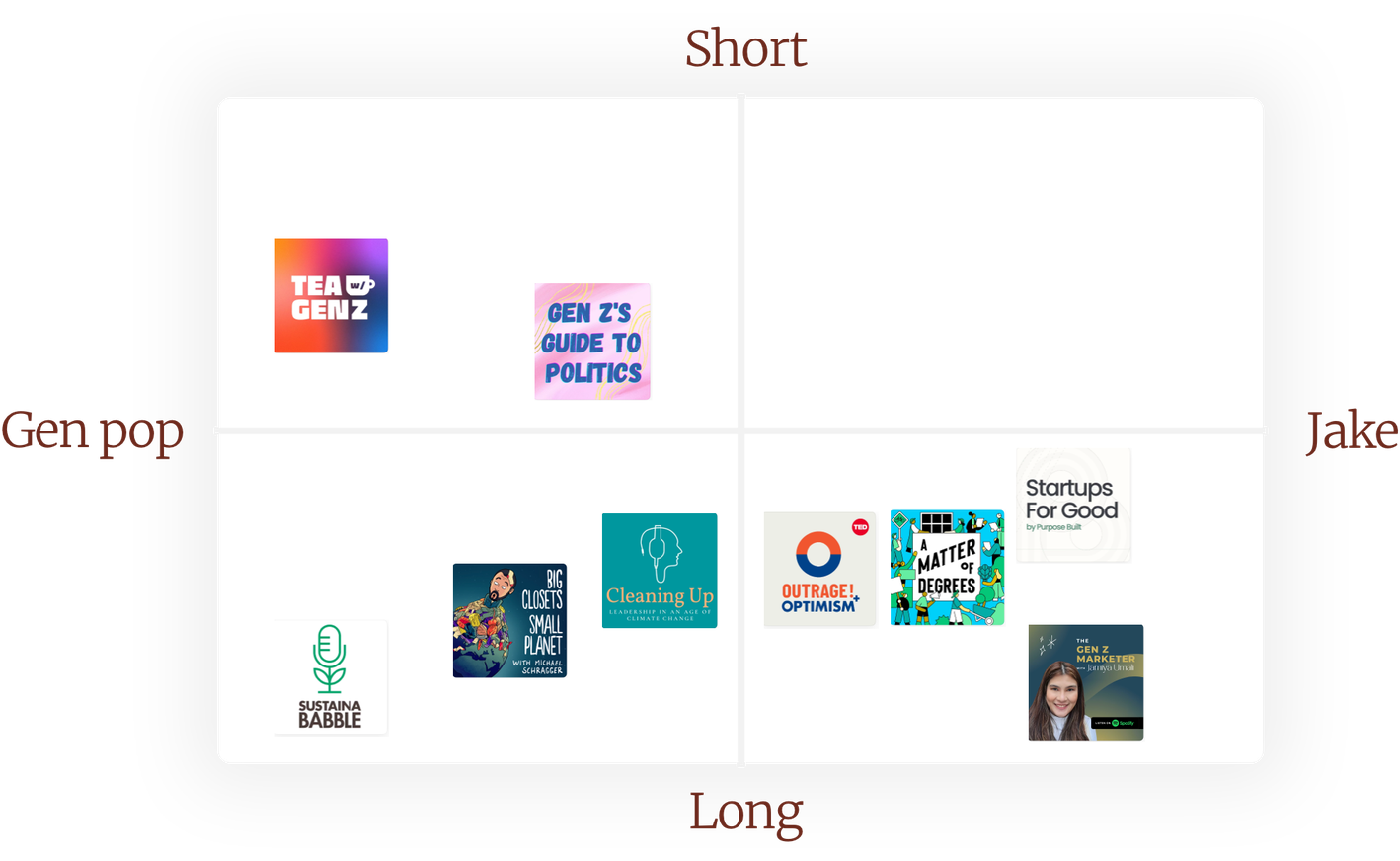What is positioning? In simple terms for podcasting, it’s about finding the things that make your show different – the audience, the level of detail, the production quality. If those things are apparent and important to your target listener, they’re potentially distinguishing features.
This is a little different from finding or defining your niche. Your niche (the specific, addressable community of listeners you’d like to reach) is part of your positioning in as much as the way you speak to them defines how they’ll perceive you. For example, if I’m running a podcast about relationships, I probably wouldn’t use stiff and formal language… that would send the wrong message.
I’m not an expert in positioning, but I know a man who is. These are my thoughts and ideas around positioning that relate to creating podcasts that move people (emotionally or into action).
Get out some paper and a pen
When Seth Godin talks about positioning, he recommends drawing vertical and horizontal axes on a piece of paper, and plotting different qualities on each.
One of the examples I give in my Podcast Like an Expert course is for a podcast with a climate action message. I made up an example ideal listener called Jake, and drew this diagram to plot other podcasts in our space so we can see where the unoccupied territory is.

In this example, the X axis indicates the appeal of the podcast, from general audience right through to our target listener, Jake. The Y axis indicates the average duration of episodes.
We could pick any quality or attribute to position against, but these are quite easy to work out.
How to position your podcast
Start by thinking about what might be important to your target listener. If you haven’t created a listener avatar, start with my free Podcast Canvas as that’ll give you the skinny.
For my example above, I picked time as an important metric because I knew my target listener was busy. I also wanted a simple way to plot how much I felt like the show would appeal specifically to my target listener, given what I knew about him… I don’t think this is orthodox.
There are plenty of things you can position against:
- Production quality
- Solo episodes vs interviews
- Narrative vs open discussion
- Conversational vs actionable
- Serious vs funny
- Current vs evergreen (hat tip to Jeremy Enns)
- Tightly edited vs live and raw
Keep an eye on what’s important
It’s only valuable to position yourself against things your listener values. If you know they don’t care about production quality, then that’s not something you need to position yourself against. That doesn’t mean you should have substandard audio, but that it’s not what’s going to set you apart.
Why is no-one else here?
If you find an empty quadrant, that’s almost certainly a good thing. But it might be worth interrogating why no-one else has cornered that market.
If it’s because it’s so super niche, then the question is whether you’re going to be able to find an audience that’s the right size for your show.
Or it might be that you’ve found yourself at the intersection of two things no-one actually cares about.
Also, my “Gen pop vs Jake” example above might be too subjective, and could cause me to make assumptions that aren’t right.
But what’s important is that it’s a start.
Putting this info to use
OK, so you’ve drawn up some axes and you’ve seen where your show might fit within the landscape. Note down those characteristics, as that’s gold when it comes to writing descriptions or pitching your show to others.
If you can be the only show that [insert differentiator here], you’re onto a winner. For example:
- The only agony-aunt style show for accountants
- The only podcast that roasts teachers’ lesson plans
- The only gadget show where the podcast reviewer has a physical disability
Have fun with it!

Add your response